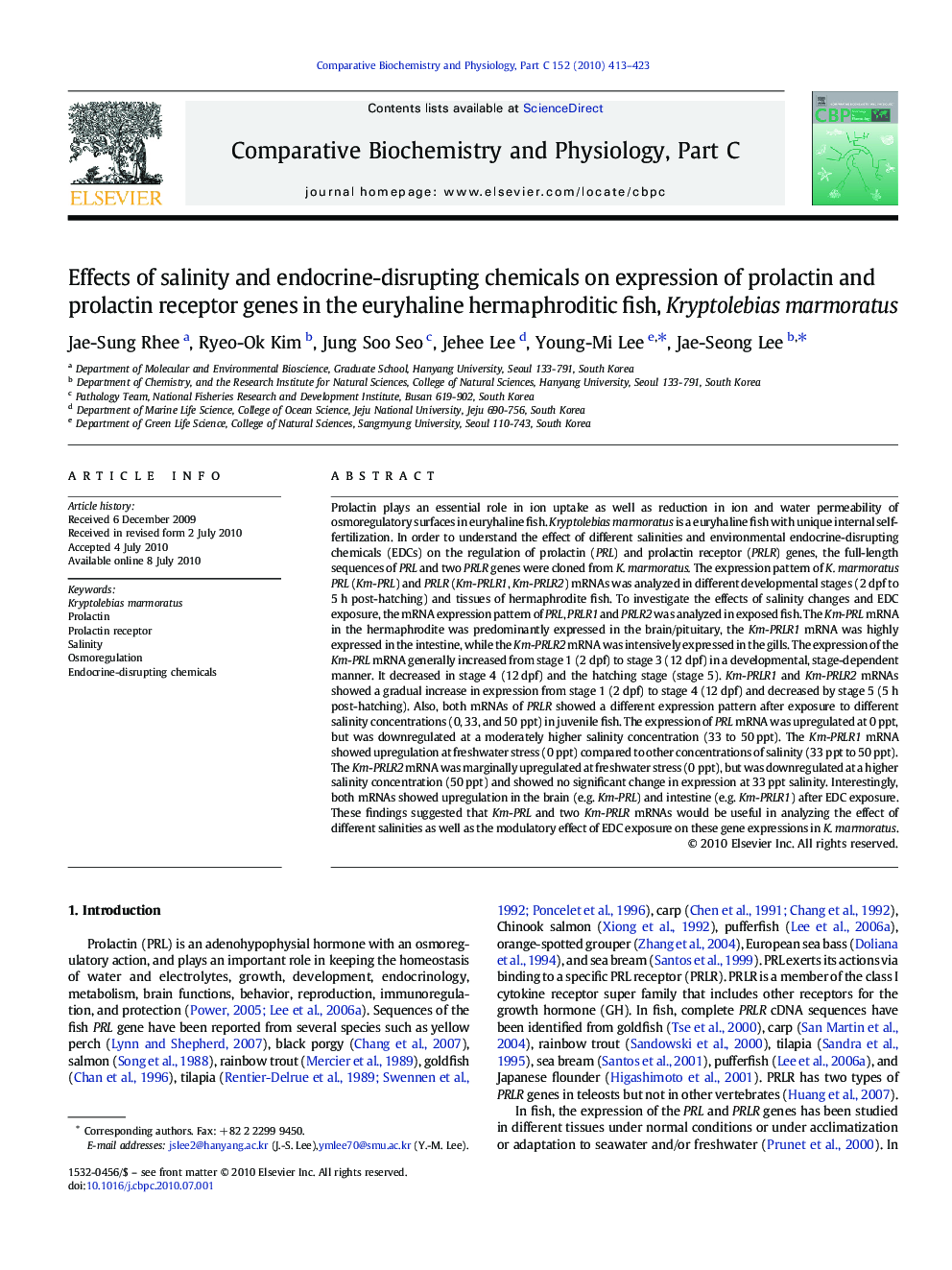| Article ID | Journal | Published Year | Pages | File Type |
|---|---|---|---|---|
| 1977441 | Comparative Biochemistry and Physiology Part C: Toxicology & Pharmacology | 2010 | 11 Pages |
Prolactin plays an essential role in ion uptake as well as reduction in ion and water permeability of osmoregulatory surfaces in euryhaline fish. Kryptolebias marmoratus is a euryhaline fish with unique internal self-fertilization. In order to understand the effect of different salinities and environmental endocrine-disrupting chemicals (EDCs) on the regulation of prolactin (PRL) and prolactin receptor (PRLR) genes, the full-length sequences of PRL and two PRLR genes were cloned from K. marmoratus. The expression pattern of K. marmoratus PRL (Km-PRL) and PRLR (Km-PRLR1, Km-PRLR2) mRNAs was analyzed in different developmental stages (2 dpf to 5 h post-hatching) and tissues of hermaphrodite fish. To investigate the effects of salinity changes and EDC exposure, the mRNA expression pattern of PRL, PRLR1 and PRLR2 was analyzed in exposed fish. The Km-PRL mRNA in the hermaphrodite was predominantly expressed in the brain/pituitary, the Km-PRLR1 mRNA was highly expressed in the intestine, while the Km-PRLR2 mRNA was intensively expressed in the gills. The expression of the Km-PRL mRNA generally increased from stage 1 (2 dpf) to stage 3 (12 dpf) in a developmental, stage-dependent manner. It decreased in stage 4 (12 dpf) and the hatching stage (stage 5). Km-PRLR1 and Km-PRLR2 mRNAs showed a gradual increase in expression from stage 1 (2 dpf) to stage 4 (12 dpf) and decreased by stage 5 (5 h post-hatching). Also, both mRNAs of PRLR showed a different expression pattern after exposure to different salinity concentrations (0, 33, and 50 ppt) in juvenile fish. The expression of PRL mRNA was upregulated at 0 ppt, but was downregulated at a moderately higher salinity concentration (33 to 50 ppt). The Km-PRLR1 mRNA showed upregulation at freshwater stress (0 ppt) compared to other concentrations of salinity (33 ppt to 50 ppt). The Km-PRLR2 mRNA was marginally upregulated at freshwater stress (0 ppt), but was downregulated at a higher salinity concentration (50 ppt) and showed no significant change in expression at 33 ppt salinity. Interestingly, both mRNAs showed upregulation in the brain (e.g. Km-PRL) and intestine (e.g. Km-PRLR1) after EDC exposure. These findings suggested that Km-PRL and two Km-PRLR mRNAs would be useful in analyzing the effect of different salinities as well as the modulatory effect of EDC exposure on these gene expressions in K. marmoratus.
